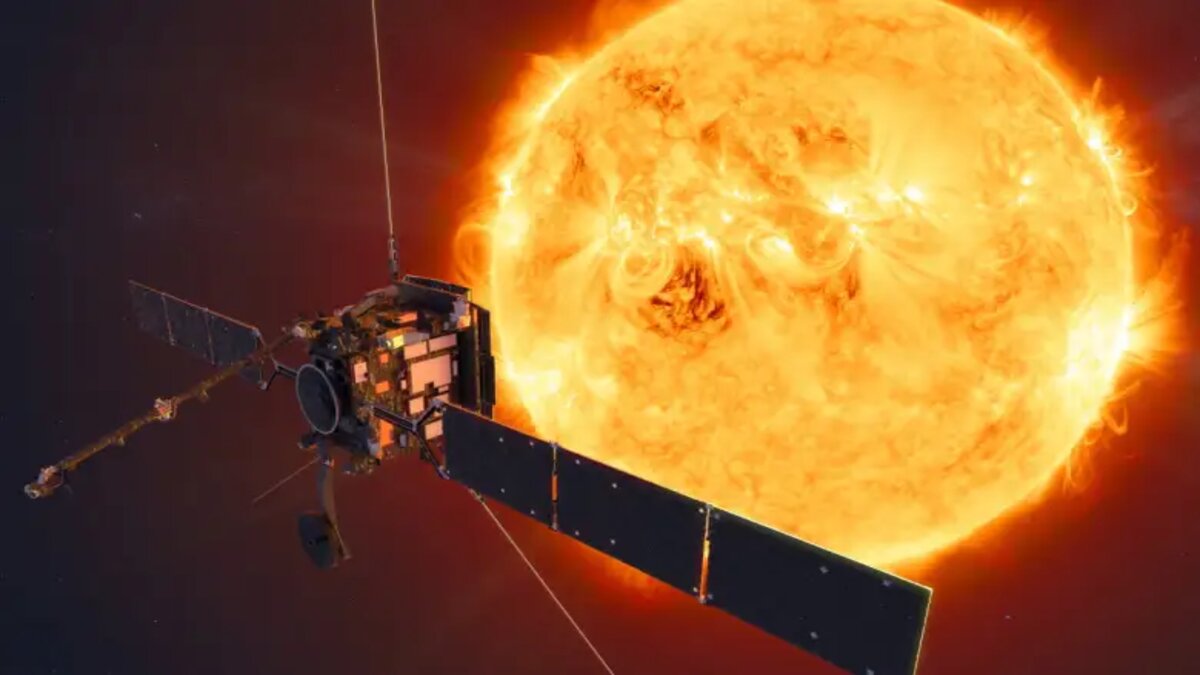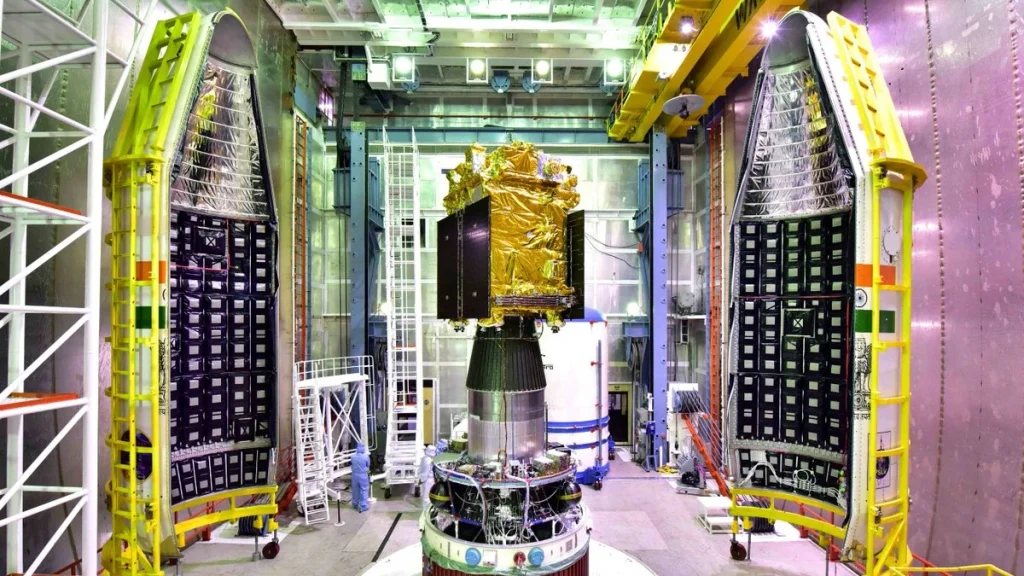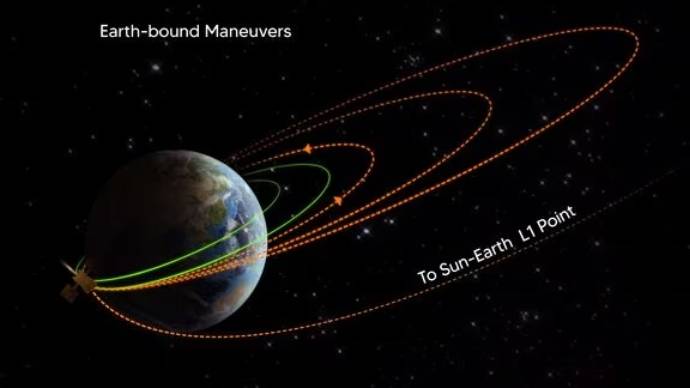Technology
India’s moment in the sun: Aditya-L1 represents an Ambitious Leap into Solar Exploration
Published
8 months agoon

In an exhilarating leap forward for India’s space exploration endeavours, the Indian Space Research Organisation (ISRO) achieved a triumphant milestone by launching its maiden solar observatory mission, Aditya-L1, on a sunlit Saturday.
At the precise moment of 11:50 am IST, amidst the anticipation and excitement, the majestic liftoff unfolded at the Satish Dhawan Space Centre in Sriharikota, Andhra Pradesh. The spacecraft embarked on its celestial journey, parting ways with the fourth stage of the rocket nearly an hour after launch—making it one of the longest missions of the Polar Satellite Launch Vehicle.
India’s ambitious Aditya-L1 mission represents the nation’s inaugural venture into space-based solar research, offering the potential to yield vital understandings of the Sun’s behavior and its impacts on Earth, according to experts.
The launch was accompanied by a live broadcast that captured the electrifying moment when hundreds of spectators erupted in exuberant cheers, their voices drowning in the thunderous roar of the rocket’s ascent.
The spacecraft, on its way to the outer reaches of Earth’s atmosphere, embarked on a captivating four-month odyssey, armed with cutting-edge scientific instruments to scrutinise the layers of the Sun.
Aditya-L1 India’s pioneering mission to study the Sun

The spacecraft is set to travel approximately 1.5 million kilometers away from Earth to reach a strategically positioned halo orbit around Lagrange point 1 (L1) within the Sun-Earth system.
This advantageous location will enable the satellite to maintain uninterrupted surveillance of the Sun, free from eclipses, thus offering real-time insights into solar activities and their impact on space weather.
Aditya L1 carries seven payloads, including the Visible Emission Line Coronagraph (VLEC) to study the solar corona, the Solar Ultraviolet Imaging Telescope (SUIT) to capture the UV image of the solar photosphere and chromosphere, and the Solar Low Energy X-ray Spectrometer (SoLEXS) and High Energy L1 Orbiting X-ray Spectrometer (HEL1OS) to analyse X-ray flares.
These sophisticated instruments will deliver multi-wavelength observations of the Sun’s atmosphere, spanning from the photosphere to the corona. This comprehensive data will empower scientists to track the transfer of energy and matter across distinct layers with precision.
“All these years, India has been observing the Sun using only ground-based telescopes, which have grown old now. As India lacked a large-scale modern observational facility, we were dependent on other sources for solar data. Aditya-L1 presents a unique opportunity to not only address the existing gaps, but also complement with newer data to address the unsolved problems in solar physics,” Prof Dipankar Banerjee, director of the Aryabhatta Research Institute of Observational Sciences, Nainital, said.
S Seetha, former director of ISRO’s Space Science Programme Office, said astronomy-based space missions are gaining importance “due to the new findings, and inspiration to the youth and general public it can provide”.
The major objectives of India’s solar mission include the study of the physics of solar corona and its heating mechanism, the solar wind acceleration, coupling and dynamics of the solar atmosphere, solar wind distribution and temperature anisotropy, and origin of Coronal Mass Ejections (CME) and flares and near-earth space weather.
“Solar physics now demands multiwavelength astronomy. It will be important how data from various instruments on Aditya-L1 are effectively combined and put to use to make sense of a solar event, its source, causes, local conditions, etc. This will require coordinate observations taken across different instruments,” Prof Banerjee said.
The four remote sensing instruments will delve deeper into solar sources, with a heightened emphasis on pinpointing the source regions. This advancement surpasses the capabilities of all previous solar missions and holds the potential to enhance our comprehension of the origins of solar eruptions or flares.
Space Weather Alert
The mission aims to generate easily understandable data that can serve as a protective measure for various satellite-dependent operations such as telecommunications, mobile-based Internet services, navigation, power grids, and more. Once tested and validated, this tailored data extracted from Aditya-L1 can be employed to issue notifications regarding space weather conditions.
According to Dr. Dibyendu Nandi, a solar physicist and Chair of the Space Weather and Monitoring Committee of Aditya-L1, there is a recommendation to explore innovative approaches for utilizing data from Aditya-L1 to derive space weather information and forecast space weather. One such approach involves the issuance of space weather notifications, which will undergo testing during the initial months following the satellite’s successful placement in the desired orbit.
Dr. A N Ramaprakash, one of the two principal investigators responsible for designing and constructing the Solar Ultraviolet Imaging Telescope (SUIT), one of the payloads onboard Aditya-L1, emphasized that this mission can also yield valuable insights into the environment surrounding the L1 point, a critical aspect of understanding space weather.
Journey to L1 and Beyond
Aditya-L1 is set to embark on an approximately 100-day voyage to traverse the 1.5 million-kilometer distance to reach the L1 point. This journey is notably shorter than that of Mangalyaan, which took 298 days to reach Martian orbit in 2014. Similar to the Chandrayaan-3 mission, Aditya-L1 will undergo a series of apogee-raising orbital maneuvers and is expected to depart Earth’s orbit on the fifth day post-launch.
“During the cruise phase, ASPEX will turn on and start performing in situ measurements of solar particles and ions,” Dr Sreejith Padinhatteeri, who was part of the team at Inter-University Centre for Astronomy and Astrophysics (IUCAA) that built SUIT, said.
Designed to image the Sun in the 200-400 nanometre (nm) of the ultraviolet band, SUIT’s imager will continuously record the entire disk of the Sun through 11 filters. SUIT’s images of these layers could help improve our understanding of the Sun’s immediate atmosphere.
In early 2024, there is optimism among scientists that they will initiate a sequence of calibration experiments lasting 2-3 months. Following this calibration phase, high-quality scientific data is anticipated to be generated.
Aditya L1 successfully performs second Earth-bound manoeuvre

Indian Space Research Organisation (Isro) said early on Tuesday that Aditya L1, the country’s first solar mission, successfully performed the second Earth-bound manoeuvre. The space agency’s Telemetry, Tracking and Command Network (ISTRAC) carried out the operation.
ISRO has slated the upcoming maneuver for September 10, around 2:30 am. Aditya L1 completed its first Earth-bound maneuver on September 3.
The spacecraft will execute two additional earth-bound orbital maneuvers before transitioning to a transfer orbit en route to Lagrange point L1 within the Sun-Earth system, situated approximately 1.5 million km from Earth. This strategic location offers an uninterrupted and continuous perspective of the Sun, rendering it an optimal site for solar observation. The spacecraft is anticipated to reach its designated orbit at the L1 point after approximately 127 days.
You may like
-


Indian Government’s Crackdown on Social Media: A Threat to Free Speech
-


The Simpsons did it again! This time foreseeing Apple’s latest technological innovation – The Apple Vision Pro
-


Dilip Venkatraman was promoted to SVP and business head for Media and Entertainment at Tech Mahindra
-


Swati Bhattacharya steps down as FCB India CCO
-


Lodha Ventures onboards Mahesh Shah as President of Corporate Communications
-


Nippon India Mutual Fund names Kaiyomurz Daver as Chief Marketing Officer


